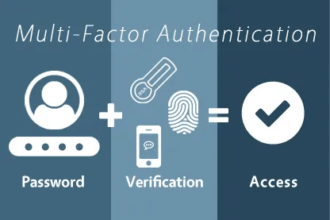Are you ready to revolutionize your data integration process? Look no further than SSIS 816. In this blog post, we will delve into the world of SSIS 816, exploring its history, features, benefits, and real-life applications. Whether you’re a seasoned IT professional or just starting in the field, SSIS 816 has something to offer for everyone. Let’s embark on this exciting journey together and uncover how SSIS 816 can elevate your data integration game to new heights!
What is SSIS 816?
SSIS 816, which stands for SQL Server Integration Services version 816, is a powerful data integration tool developed by Microsoft. It is part of the Microsoft SQL Server suite and designed to facilitate the extraction, transformation, and loading of data from various sources into a destination database.
This robust platform offers a user-friendly interface that allows users to create workflows visually through the use of drag-and-drop functionalities. SSIS 816 supports both on-premises and cloud data integration scenarios, making it versatile for different business needs.
With its rich set of features such as flexible connectivity options, workflow automation capabilities, and robust error handling mechanisms, SSIS 816 empowers organizations to streamline their data processes efficiently.
Whether you are looking to migrate data between databases, cleanse and transform information before loading it into a warehouse or automate ETL processes seamlessly – SSIS 816 has got you covered.
The History and Evolution of SSIS 816
SSIS 816, short for SQL Server Integration Services, has a rich history that dates back to its initial release. Originally introduced by Microsoft as a data integration tool, SSIS 816 quickly gained popularity among businesses for its robust features. Over the years, it has evolved significantly to meet the changing needs of users in the ever-evolving tech landscape.
With each new version release, SSIS 816 has undergone enhancements and improvements to enhance performance and efficiency. From simplifying complex data transformations to providing seamless connectivity with various data sources, SSIS 816 continues to adapt to modern challenges in data management.
The evolution of SSIS 816 mirrors the rapid advancements in technology and big data analytics. As organizations strive to harness the power of their data assets, SSIS 816 remains at the forefront as a reliable solution for integrating disparate systems and streamlining workflows.
The Features and Benefits of Using SSIS 816
SSIS 816 comes packed with a plethora of features that streamline data integration processes. One key benefit is its user-friendly interface, making it easy for users to design and deploy ETL (Extract, Transform, Load) workflows without extensive coding knowledge. With SSIS 816’s drag-and-drop functionality, tasks like data extraction from multiple sources and transformations become seamless.
Another advantage of using SSIS 816 is its robust connectivity options. Whether you’re working with databases, cloud services, or applications, SSIS provides a wide range of connectors to ensure smooth data flow between disparate systems. This flexibility allows for efficient data movement across various platforms.
Moreover, SSIS 816 offers advanced scheduling capabilities, allowing users to automate repetitive tasks and optimize workflow execution. By setting up schedules within the package configurations, users can ensure timely and accurate data processing without manual intervention.
Additionally, the built-in logging and error handling features in SSIS 816 enable users to track job progress effectively and troubleshoot issues promptly. Detailed logging information helps identify bottlenecks in the workflow and fine-tune performance for optimal results.
How to Use SSIS 816 in Your Daily Life
Imagine streamlining your daily tasks effortlessly with SSIS 816. Start by creating data integration packages to automate processes like transferring files, updating databases, and generating reports. Utilize the user-friendly interface to design workflows that suit your specific needs.
Leverage SSIS 816’s scheduling capabilities to run packages at designated times, ensuring timely execution of critical operations without manual intervention. Monitor package performance using built-in logging features to identify any bottlenecks or errors promptly.
Take advantage of SSIS 816’s extensive library of connectors to seamlessly interact with various data sources and destinations. Whether you’re working with SQL Server, Excel spreadsheets, or cloud-based applications, SSIS 816 has you covered.
Stay ahead of the game by exploring advanced functionalities such as data cleansing, transformation, and error handling within SSIS 816. Enhance productivity and efficiency in your daily routine by harnessing the power of this versatile tool.
Success Stories of Companies Implementing SSIS 816
Companies across various industries have experienced remarkable success after implementing SSIS 816 in their data integration processes. One such company, a leading e-commerce giant, saw a significant increase in operational efficiency and data accuracy. By utilizing SSIS 816’s robust features, they were able to streamline their workflows and make informed business decisions based on real-time insights.
In the healthcare sector, a hospital network implemented SSIS 816 to centralize patient data from multiple sources securely. This resulted in improved patient care coordination and reduced errors in medical records management. The seamless integration capabilities of SSIS 816 played a crucial role in enhancing overall patient experience.
Moreover, a financial services firm leveraged SSIS 816 to automate complex data transformation tasks, leading to faster processing times and enhanced regulatory compliance. The scalable architecture of SSIS 816 allowed them to adapt easily to changing market demands without compromising on data integrity.
These success stories highlight the tangible benefits that companies can achieve by harnessing the power of SSIS 816 for efficient data management and decision-making processes.
Common Challenges and Solutions When Using SSIS 816
When using SSIS 816, one common challenge that users may encounter is the complexity of designing and maintaining ETL processes. This can lead to errors, delays in data processing, and overall inefficiency. To overcome this hurdle, it is essential to have a clear understanding of the data flow and utilize best practices in SSIS development.
Another challenge could be dealing with performance issues during data integration tasks. This may occur due to large volumes of data or inefficiently designed packages. By optimizing package configurations, utilizing parallelism where possible, and tuning SQL queries, users can enhance the performance of their SSIS workflows.
Furthermore, troubleshooting errors within SSIS packages can be another roadblock for users. It’s crucial to regularly monitor logs, utilize breakpoints for debugging purposes, and leverage tools like Data Viewer to identify and resolve issues promptly.
In addition, version control and deployment management are vital aspects that users may struggle with when working on multiple environments. Implementing proper version control mechanisms and utilizing deployment utilities provided by SSIS can streamline these processes effectively.
Future Trends and Updates for SSIS 816
The future of SSIS 816 looks promising with continuous updates and enhancements to meet evolving data integration needs. As technology advances, SSIS 816 is expected to adapt by incorporating more automation capabilities for streamlined workflows.
One trend to watch out for is the increased focus on cloud integration within SSIS 816. With more businesses moving their data operations to the cloud, SSIS 816 is likely to offer improved connectivity and functionality with popular cloud platforms.
Moreover, improvements in performance optimization are anticipated in future updates of SSIS 816. Enhancements in processing speeds and resource utilization will enable users to handle large volumes of data more efficiently than ever before.
Additionally, machine learning and AI integrations could be a game-changer for SSIS 816 users. By leveraging predictive analytics and smart algorithms, SSIS 816 may empower users with advanced data insights and decision-making capabilities.
Conclusion: Why You Should Consider Using SSIS 816
Considering the history, evolution, features, benefits, real-life applications, success stories from companies, common challenges with solutions, and future trends of SSIS 816, it’s evident that this data integration tool is a powerful asset for businesses. Whether you are a small startup looking to streamline your processes or a large corporation handling massive amounts of data daily, SSIS 816 can cater to your needs effectively.
By leveraging SSIS 816 in your workflow, you can enhance productivity through automation and minimize manual intervention drastically. The success stories shared by various companies serve as compelling evidence of the positive impact this tool has had on their operations.
As technology continues to advance rapidly and competition grows fiercer in every industry, staying ahead requires efficient data management tools like SSIS 816. Embracing this solution will not only optimize your current processes but also pave the way for future growth and innovation within your organization.
In conclusion: With its robust capabilities and continuous updates tailored to meet evolving market demands, adopting SSIS 816 is a strategic move that can revolutionize how you handle data integration tasks. Stay ahead of the curve – consider integrating SSIS 816 into your daily operations today!







